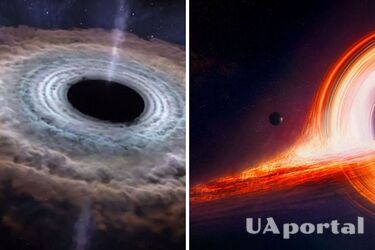Scientists discover supermassive black holes in space: thousands of times larger than usual

Giant black holes existed a billion years after the Big Bang. The Webb Space Telescope has discovered supermassive black holes in the early Universe, located in the centers of galaxies and having an abnormally large mass. According to the latest data, their mass can reach 10% of the mass of the entire galaxy, which is about a thousand times more than predicted by models.
According to Live Science, the Webb Telescope has detected black holes whose mass is millions of times that of the Sun, although according to calculations, such objects should have taken much longer to form - at least a billion years. However, astronomers have found that these black holes in small galaxies began to grow much earlier than previously thought. Such galaxies, which look like red dots in telescope images, existed as early as 1.5 billion years after the Big Bang, which casts doubt on some current theories of the evolution of the Universe.
The red hue of these galaxies is due to the intense radiation from the accretion disk of the black hole - the hot cloud of gas and dust that it absorbs. This radiation is so bright that it can overwhelm the light from all the stars in the galaxy, making it visibly red.
The researchers concluded that supermassive black holes can actively grow even in relatively small galaxies. Although the exact mechanisms of this phenomenon remain unclear, scientists suggest that it may be the result of the rapid absorption of matter in the early Universe. Probably, the high density of gas contributed to a more compact arrangement of stars, and after their collapse, black holes were formed, which gradually merged to form even more massive objects. This discovery may change the way we understand how black holes and galaxies evolved in the early stages of the Universe.
If you want to get the latest news about the war and events in Ukraine, subscribe to our Telegram channel!
